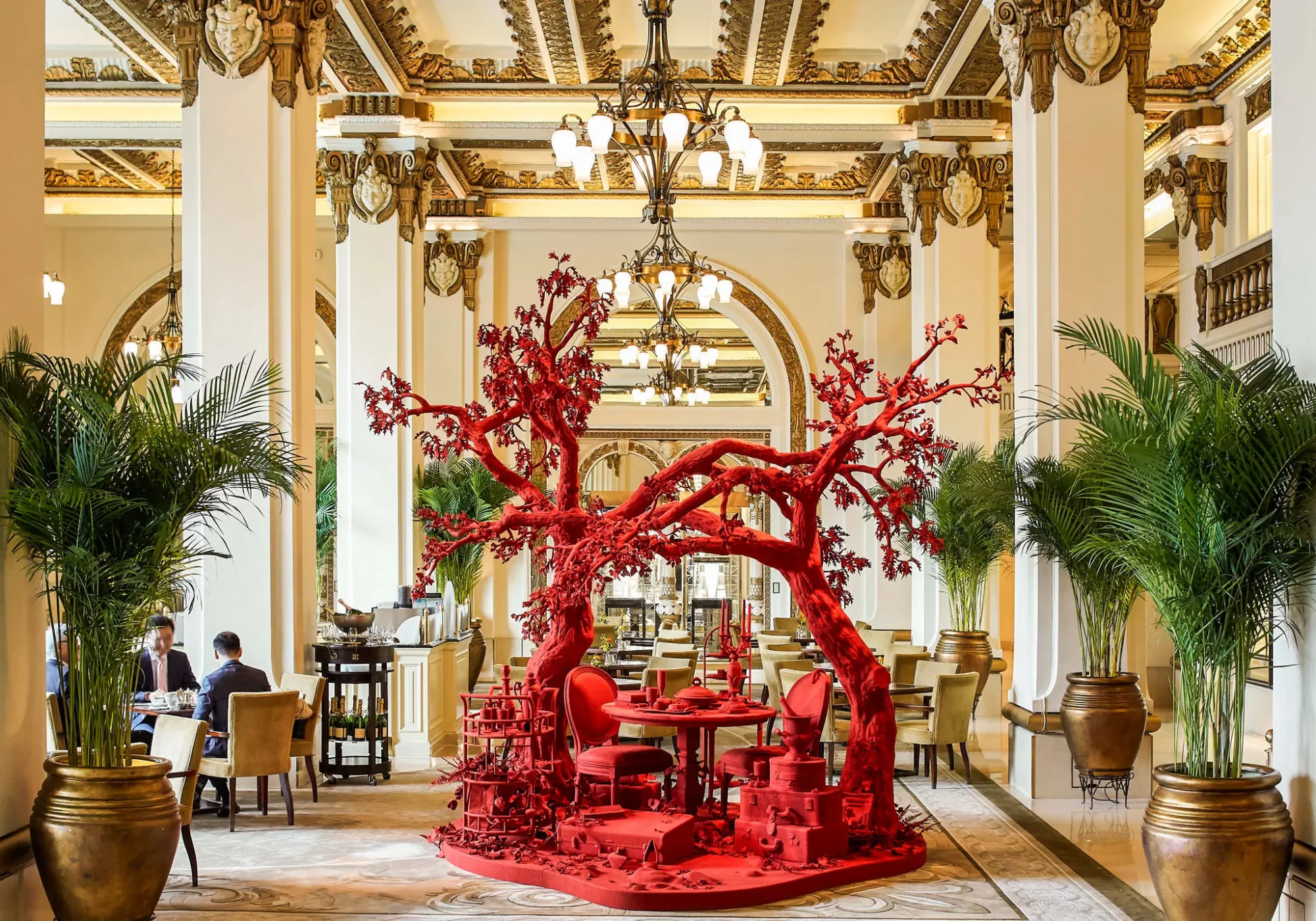
Enhancing Spaces with Art: A Guide to Interior Design
Decorating spaces with art, such as hotels, residences, offices, and commercial buildings, requires creativity and taste. By incorporating suitable art elements, you can create a beautiful, inviting, and calming atmosphere. The presence of art and artistic pieces has a significant impact on the overall feel of a space and its harmony. In modern architectural design and developed countries, art plays a crucial role in designing various spaces, especially those that serve as gathering places or relaxation areas for people.
This article will focus on the artistic furnishing of hotels and hospitals.
General Principles of Artistic Furnishing:
- Choosing a Style: The first step is to select a desired style. There are various styles such as modern, traditional, minimalist, classic, and more, each with its unique aesthetic. The chosen art style should complement the overall design and architecture of the space.
- Color Combination: Colors play a significant role in creating a mood. The right color choice can make a space appear larger, brighter, or cozier. The colors used in paintings should harmonize with the wall colors and the overall environment. Interior designers are responsible for selecting artwork with complementary, contrasting, or analogous color schemes to match the surroundings.
- Lighting: Proper lighting can enhance the beauty of art elements. Lighting can be used to create focal points or emphasize specific elements.
- Furniture: Suitable furniture, in addition to being aesthetically pleasing, should also be functional and comfortable. The arrangement of furniture alongside three-dimensional artworks or wall-mounted pieces is a crucial aspect of artistic furnishing in various spaces.
- Accessories: This category includes the artworks themselves that are used in the environment. Selecting these works and ensuring they harmonize with the space and design style is the most critical part of artistic furnishing in places like hotels or hospitals. Accessories such as paintings, sculptures, vases, and more can give a space character and identity.



Let’s examine some specific spaces where artistic furnishing is particularly important and practical:
Artistic Furnishing of Hotels:
Hotels have various areas, including lobbies, rooms, dining areas, restaurants, and public spaces. Here are some characteristics of artworks suitable for each area:
- Bedrooms: In hotel bedrooms, the focus should be on creating a relaxing and comfortable atmosphere. Using soft colors, calming artwork, and soft lighting can help create a peaceful environment.
- Lobbies: The hotel lobby is the first space guests encounter. The artistic furnishing of the lobby should create a welcoming and pleasant impression. Using artwork, sculptures, and beautiful furniture in harmony with the space is essential.
- Restaurants: Hotel restaurants are places for dining and socializing. The artistic furnishing should create a pleasant and relaxing atmosphere for guests. Using warm colors, food-related artwork, and appropriate lighting can contribute to a welcoming dining experience.
- Public Spaces: Public spaces in hotels, such as courtyards and swimming pools, are areas for guests to relax and enjoy themselves. The artistic furnishing of these spaces should create a cheerful and lively atmosphere. Using modern sculptures, vibrant colors, and creative lighting can help create a cheerful and lively atmosphere in public hotel spaces.
Artistic Furnishing of Hospitals:
- Public Areas: In public areas of hospitals, such as lobbies and corridors, the focus should be on creating a calm and soothing atmosphere. Using soft colors, nature-themed artwork, and soft lighting can help create a relaxing environment.
- Private Rooms: In private hospital rooms, the focus should be on the comfort and well-being of patients. Using bright colors, calming artwork, and soft lighting can help create a relaxing environment for patients.
To achieve successful artistic furnishing in various environments, it is advisable to involve artists from fields such as painting and sculpture, as well as interior designers, to ensure the proper placement and visual harmony of artworks during the design phase.

